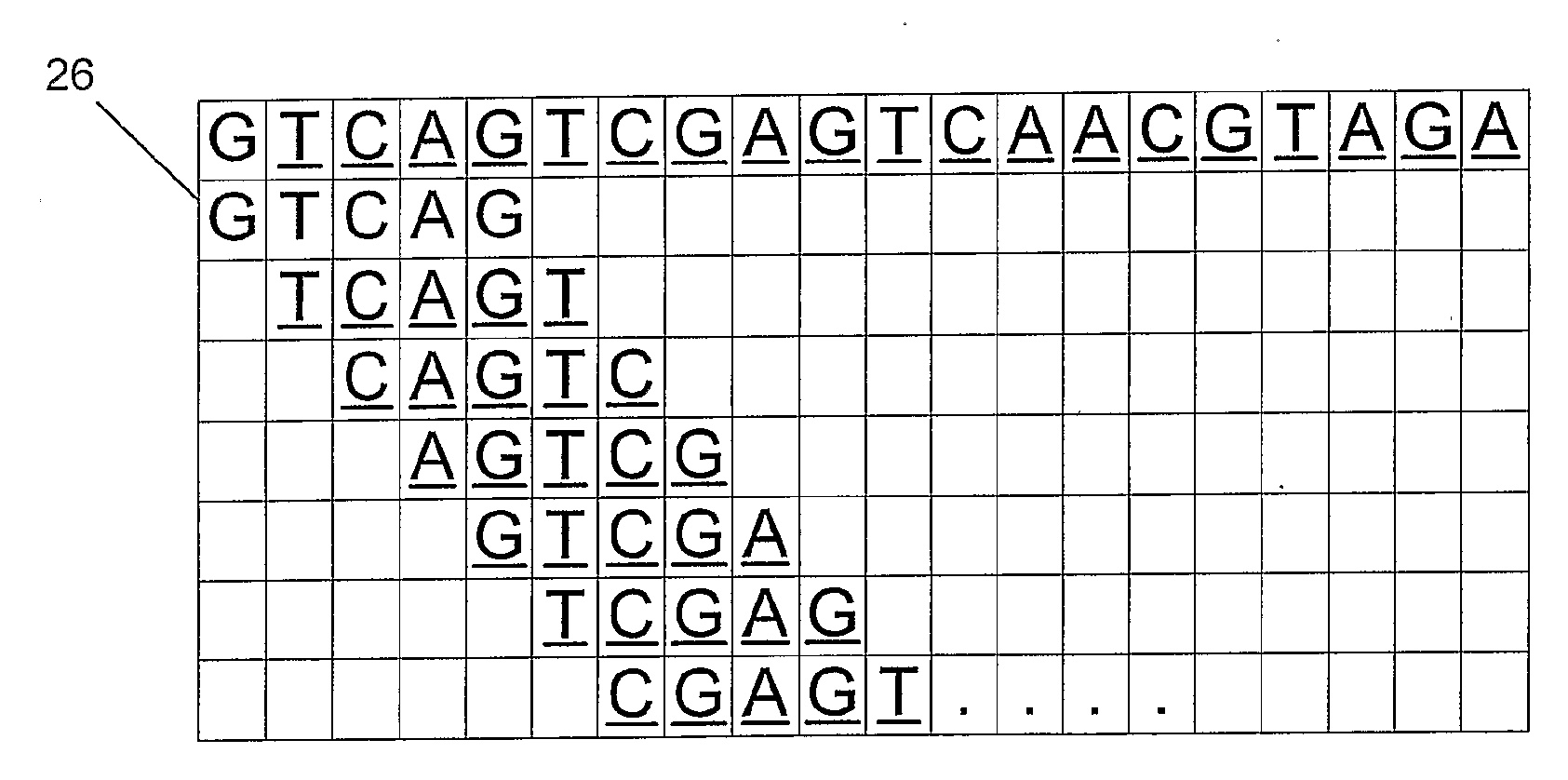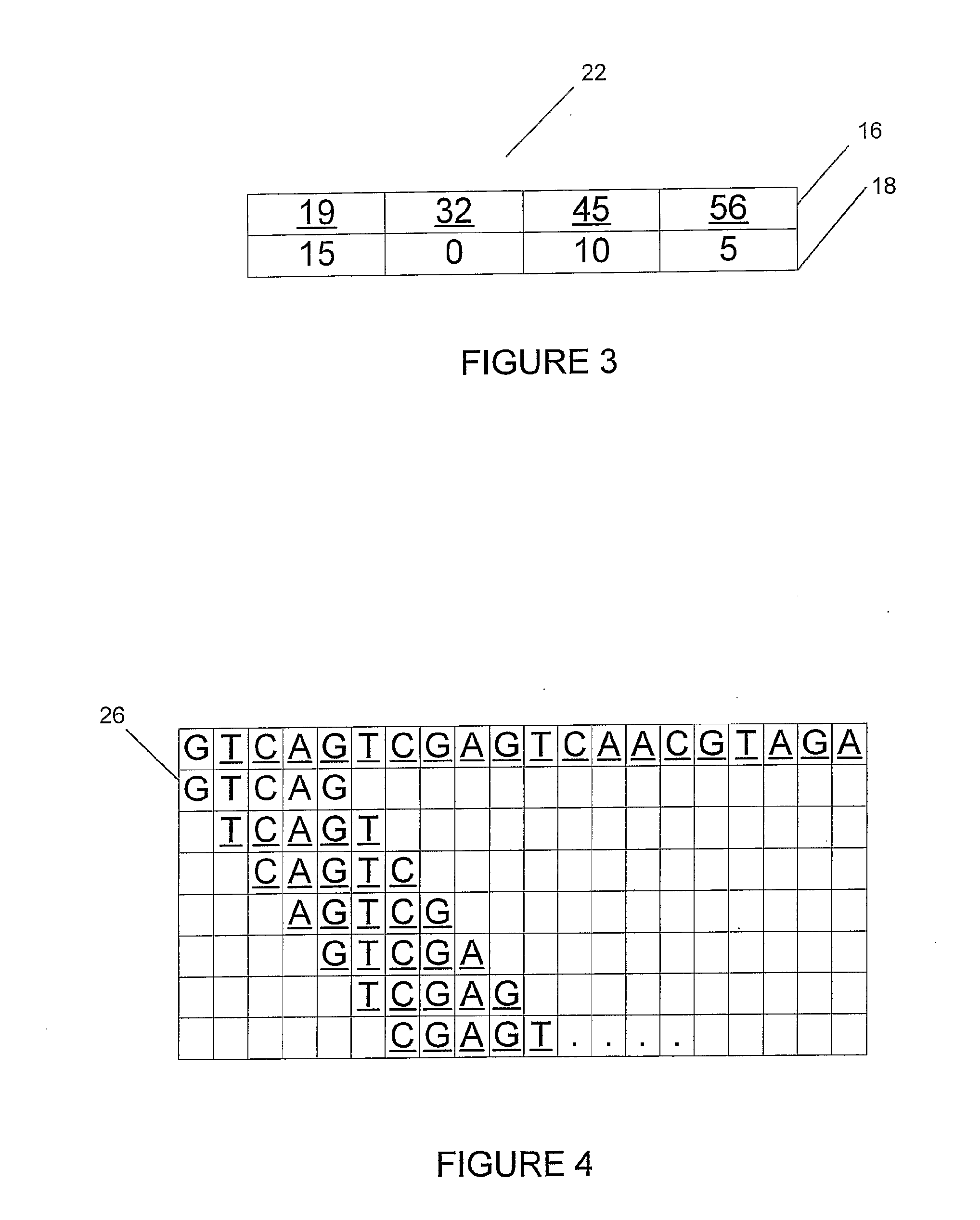Data Collection Cataloguing and Searching Method and System
a data collection and cataloguing technology, applied in the field of system and method for indexing and searching patterns, can solve the problems of large amount of data collected and stored, large growth, and inability to utilize the enormous amount of data, so as to optimize the resource requirements for pattern matching, increase the size or length of the pattern or data element, and reduce the storage space
- Summary
- Abstract
- Description
- Claims
- Application Information
AI Technical Summary
Benefits of technology
Problems solved by technology
Method used
Image
Examples
example 1
[0109]A search is performed on an original input pattern that is a nucleotide sequence comprising, “A T C G T C G T T C A G C A T A C C G T”. As shown in an illustration (10) of FIG. 1, the input pattern (12) has a k=5 non-overlapping contiguous window applied across it. The input sequence pattern is broken into four data chunks (14), “ATCGT, CGTTC, AGCAT and ACCGT”. Each of the four chunks is converted into a decimal index, e.g. 32, 56, 45 and 19 in an index[ ] array (16) of a parallel array table (20), as shown in FIG. 2. A location[ ] array (18) includes data representing the position of each data chunk in original file. In this example, the data chunk with the index 32 is at position 0, the chunk with index 56 is at position 5, the chunk with index 45 is at position 10, and the chunk with index 19 is at position 15.
[0110]To find the location of a particular data chunk, a chunk with the correct index is found and the corresponding position is cross-referenced. According to the pa...
example 2
[0116]Performance was assessed on large data sets compared to current search techniques. A genomic sequence comparison is made by using the present invention and using the current search baseline, BLAST. Each of the 5 million HTG reads of the Populus balsamifera, subspecies trichocarpa genome was compared with each other (effectively 25 million comparisons). The present method resulted in a comparison of all sequences 10,782 times faster than the search time of the BLAST method. The experiment was performed on an AMD Opteron 244 with two 64-bit 1.8 GHz processors and 12 GB of RAM running Linux. With the present invention, the bigger the job, the greater the differential with other current search methods.
[0117]FIG. 5 shows a block schematic flowchart of a basic cataloguing process executed in accordance with one embodiment of the present invention. At the initial step A of this process the data collection to be catalogued is divided into a number of fixed length data elements.
[0118]T...
PUM
 Login to View More
Login to View More Abstract
Description
Claims
Application Information
 Login to View More
Login to View More - R&D
- Intellectual Property
- Life Sciences
- Materials
- Tech Scout
- Unparalleled Data Quality
- Higher Quality Content
- 60% Fewer Hallucinations
Browse by: Latest US Patents, China's latest patents, Technical Efficacy Thesaurus, Application Domain, Technology Topic, Popular Technical Reports.
© 2025 PatSnap. All rights reserved.Legal|Privacy policy|Modern Slavery Act Transparency Statement|Sitemap|About US| Contact US: help@patsnap.com



